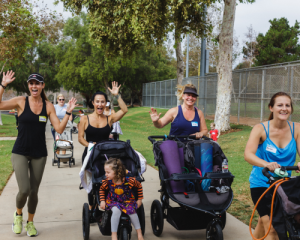The Santa Ana area has a brand-new school: the Irvine Hebrew Day School. Irvine Hebrew is a Jewish day school that has grown exponentially since its inception, and has made a permanent home in the area starting this coming fall 2019 semester. Founded five years ago by Karin Hepner, Ph.D, and Andy Elster as a kindergarten program, Irvine Hebrew began from what they saw as the need for a progressive, social-emotional-focused education committed to educational practices encouraging student growth. This focus on the personal development of children from childhood to young adult is what sets Irvine Hebrew apart. The curriculum is intensely focused on how children grow and change in emotional and social aspects, and accommodating that growth for each child’s individual needs. The day school now educates students from kindergarten up to sixth grade, and has a permanent location to call home.
Their new location off of 17th Street in Santa Ana sits on a five-acre plot with room for all kinds of programs, events and activities. The area boasts two buildings for school classrooms and large gatherings, plus a playground area. The playground and land space has a garden section where students can grow their own fruits and vegetables and can witness for themselves the process of how food sprouts from the ground and ends up at the table. The building structures include not only an auditorium, but the school building directly behind can accommodate all of their grade levels and classrooms with room to spare.

Irvine Hebrew Day School – Classroom
In that school building, every aspect of the K-6 classrooms was designed with the day school students’ social-emotional growth in mind. The tables and chairs are made with materials and textiles that are soothing for children’s touch sensitivity. The walls are colored in different swatches of aqua, purple, green and other tones that reflect the school’s logo. The design was developed to boost creativity, focus and an overall calming atmosphere. These elements when combined allow children to feel more independent, more creative and more inclined to grasp school subjects with both hands, according to the school.

Irvine Hebrew Day School – Auditorium
The new auditorium, with professional-grade sound and lighting, can comfortably seat up to 975 people. The space will be used for not only school events and activities, but for community events, lectures, celebrations, presentations and more.

Irvine Hebrew Day School – Youth Room
The classroom building also includes a music room that is open to all grades, and students from upper elementary grades three to six have a space of their own as well. Irvine Hebrew’s youth room is a relaxed and fun area for older kids to relax and socialize. It has a foosball table, comfortable couches and armchairs, a vending machine and other games. The youth room is located behind the Black Box theater where students have the creative freedom to perform plays, musicals and more for other students, family and the community. Made as safe spaces, these rooms allow the children to express themselves and have a spot to truly call their own.
This freedom and focus on students’ independence and growth into well-rounded adults is the approach to education by Irvine Hebrew and its founders, and it is proving successful. Just this past year, their students took the state CogAT and MAPGrowth exams, which measure students’ level of aptitude and cognitive ability. The students of Irvine Hebrew Day School scored an average 62 percent on the exam across the school, while the state average is around 8 percent. Irvine Hebrew has started sharing its outside-the-box methods with other schools in the area.
Their dedication comes from not only their students, but from their guiding goals that the school would be even more than an education center — it would be the community hub for families in the area. Focus on community and family keep the school centered and focused on the incoming year.
“Our goal is to receive national recognition for being a model school, implementing a Jewish curriculum grounded in high-level academic rigor and best practices in social-emotional learning,” said Tammy Keces, the head of school.
By Meagan Lockhart








Leave a Reply